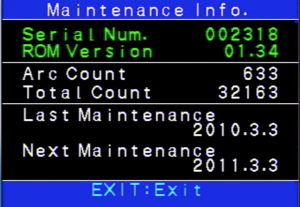 There seems to be a fair bit of confusion surrounding the topic of how to calibrate a arc fusion splicer.
There seems to be a fair bit of confusion surrounding the topic of how to calibrate a arc fusion splicer.
This question crops up from time to time, from both project supervision level personnel to the hands on techs in the field.
When using the word ‘calibration’ with regards to arc fusion splicers there are really two meanings.
The first meaning factory calibration and the second, arc calibration. Just for the record we are talking about factory calibration in this article.
A field supervisor/engineer asks; Are your splicers factory calibrated?
The answer is no . There is no way to “factory calibrate” a fusion splicer. The looks on their faces are priceless. The answer they are excepted would be, “Yes they are.”
A technician asks; Should I send my machines in for re-calibratation? I heard all they do is clean them. I can do that myself.
The answer is yes. Send that machine in every couple of year and have if looked over by the professionals.
Confused yet?
Well don’t be. Both answers are correct. Let me explain.
Although the term ‘calibration’ is used when describing the accuracy and reliable of an arc fusion splicer, there is no way to calibrate a splicer. At least not in the sense when thinking of measuring instruments like an OTDR or power meters. Both of these are devices that can and should be calibrated at a minimum of once per year.
Rather in the case of the fusion splicer, it is recommended to have periodic service and routine maintenance preformed to maintain optimum performance.
Although you’re not sending it in for calibration per say the machine has several movable parts that can and do wear out which takes the splicer out of tolerances that prevent it from preforming it’s job properly.
The most common parts that wear out on a splicer include, but or not limited to;
- Electrodes
- V-Grooves
- Fiber Clamp Chips
- Objective lenses
- Motors
But why have a fusion splicer serviced at all?
An arc fusion splicer that is a real work horse will, over time, develop major tolerance problems that can greatly affect it’s performance. The two biggest culprits, V-grooves and fiber clamps chips. These two items wear out which effects fiber-stuffing distance which in turn affects the splice integrity and loss.
Fiber-stuffing distance you say?
When the main fuse method is initiated the fiber are brought together and additional end pressure is applied. The additional end pressure allows the fibers to move towards each other slightly as they melt. How far they move, called overfeed, auto-feed or fiber-stuffing is critical. Too much or too little and the splice will not be satisfactory.
As the surface of the V-grooves wears down and the clamp chips naturally become loose due to repeated use the fiber will then begin to slip in the fiber clamp chips which will change the fiber-stuffing distance. A tech cannot see this ‘slip’ as it is not detectable with the naked eye as it happens.
The way a fiber technician detects it is in the splicers monitor. This is usually in the form of a splicing disaster called a ‘waisting’ or ‘necking’ splice. But it doesn’t always show up just as a splice with visible imperfections. Many times the problem is deeper into the matrix of the splice. At the level of core and clad offsets. No matter how you look at it, the result is the dreaded re-burn. Arg!
What else could go wrong with your splicer?
Another critical part that wears out on an arc fusion splicer is the objective lenses. If your a tech that takes care of your machine then you know that the cameras are crucial to fiber alignment in a Profile Alignment System (PAS).
Over time the surface of the objective lens may become scratched or pitted due to access slag from thousands of electrode discharge (a slightly white/gray film that builds up on the inner sides of the V-grooves and lens surfaces).
In some cases the seal that keeps dust and particles from getting inside the lens can dry out and crack. Once this happens all it takes is one particle to get underneath the lens and in most cases the splicer will no longer be-able to function.
So, if you’re of the thinking that all the factory does is clean up the machine and calls it ‘calibration service’. Think again. There are several things that can go wrong in the course of work day. Any one of which mention here can affect the performance and reliability of the fiber.
Periodic maintenance on your fusion splicers will insure that your splicing is 100% reliable – no question – no re-burns.
Keep the fusion splicing clean grasshopper!
